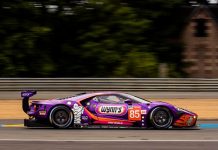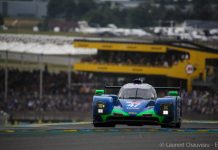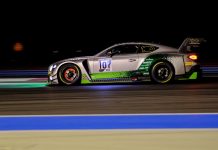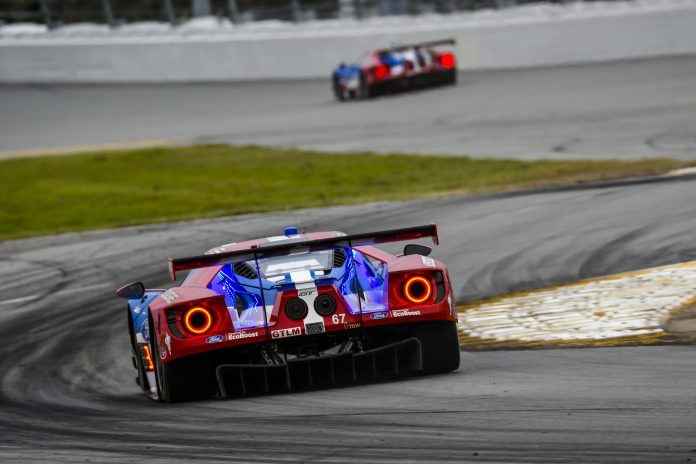Teamwork will be key for Ford Chip Ganassi Racing at Sebring International Raceway this week.
Three Ford GTs will compete in the storied 12-hour “sprint” – the No. 66 of recent Rolex 24 At Daytona winners (GTLM) Joey Hand, Dirk Müller and Sébastien Bourdais; No. 67 of Richard Westbrook, Ryan Briscoe and Scott Dixon; and the No. 68 of Stefan Mücke, Olivier Pla and Billy Johnson.
The team hopes to improve on last year’s results at Sebring, America’s oldest road racing track, when they finished p5 (No. 67) and p8 (No. 66).
“When you have more cars on the track, you can cover more ground and try more new things,” Hand said. “You just have more data coming in. We all work well together, so this gives us more opportunities to win on the track and advances our learning curve away from it.”
The race is the second in both the IMSA WeatherTech SportsCar Championship season and Tequila Patrón North American Endurance Cup (TPNAEC). Ford and Ford Chip Ganassi Racing lead the IMSA WeatherTech manufacturers,’ team and driver points standings after one round. They trail by two points in the TPNAEC standings, a stand-alone ranking that features North America’s most prestigious endurance races.
“We’re always in the hunt at Sebring,” Hand said. “I like the race. It’s fun, but it’s a grueling 12 hours. People always say ‘but it’s only 12 hours, how bad can it be?’ but it’s more like a 36 hours at Daytona. IMSA racing is always really close, but Sebring always comes down to a knock-down, drag-out fight. I’ve been in dogfights to win on the last corner of Sebring three or four times in my career. It’s always one you want to win.”
Ford Chip Ganassi Racing enters the race with momentum from a class win at the IMSA WeatherTech season-opener, the Rolex 24. The race at Sebring is just as important in the minds of sportscar racing historians, enthusiasts and the drivers themselves, and what makes it special is also its greatest challenge – much of the surface of the track remains from the facility’s days as Hendricks Field, a World War II base used to train B-17 crews.
“Sebring is a very special, unique circuit,” Mücke said. “I remember the first time I walked the track with my engineer and I asked him where the track was, as the surface we were walking on had massive bumps and holes. I thought it was the road for the emergency vehicles. It was the race track. The track is a big test for the cars and a very physical track for the drivers. It is very popular with the spectators, too, who have a great party during the race.”
The first race at Sebring, a six-hour, was held in 1950. Two years later, the 12-hour format was born. Drivers who have won in previous iterations of the Ford GT include: Ken Miles (1965-66); Bruce McLaren (1965 and ’67); Lloyd Ruby (1966); and Mario Andretti (1967). Fifty years ago, McLaren and Andretti won the title in the first race that averaged more than 100 mph.
Ford Chip Ganassi Racing is ready to once again take on the grueling track after participating in a series test just weeks ago. The race is the final stop on the quest to sweep three of the world’s most legendary endurance sports car events within nine months, including Rolex and the Le Mans 24 GTE Pro win in June 2016.
“I had the opportunity to watch the Ford GT on the track (during the test) and it looked like it was handling the bumps very well,” Pla said. “I like racing there. I’ve had the overall pole there for the last two years in prototype. A pole is good, but you want the victory, so let’s see if we can do it this year.”









